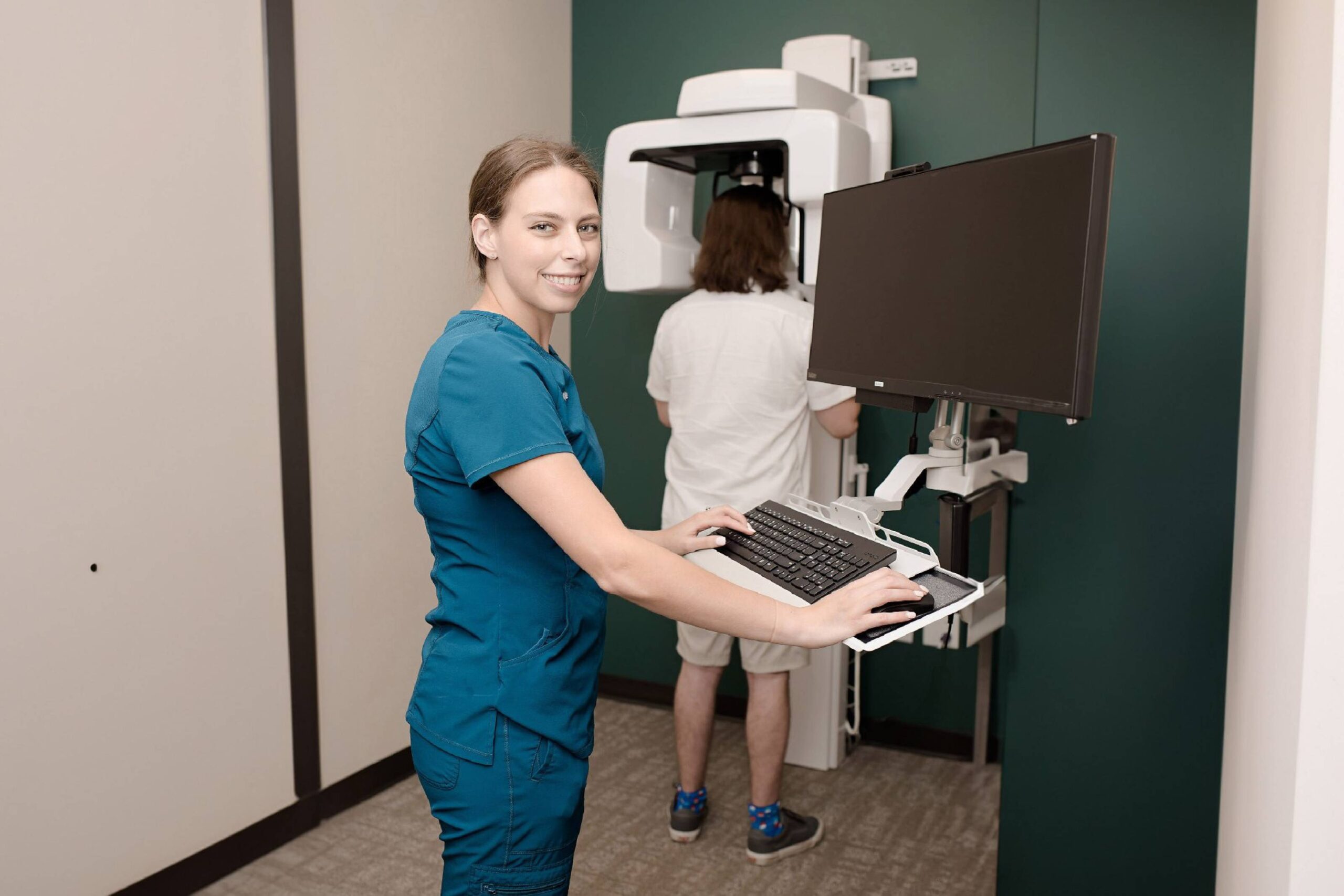Labial & Lingual Frenectomies
A tight or thick frenum—the small fold of tissue that connects your lips, cheeks, or tongue to your gums—can cause problems with speech, eating, or oral hygiene. Labial and lingual frenectomies are simple in-office procedures that release this restricted tissue to restore normal movement and function.
By freeing the tongue or lip, we can correct issues such as tongue-tie or lip-tie, which can affect speech development in children and comfort in adults. The procedure is quick, gentle, and often performed with laser or precision instruments for a faster, more comfortable recovery and minimal bleeding.

Potential Consequences of a Restricted Frenum
Difficulty pronouncing certain words or sounds
Speech delays or challenges with articulation
Discomfort while eating or swallowing
Gaps between teeth or gum recession
Difficulty maintaining oral hygiene
Frustration or self-consciousness in children or adults
Reasons for Tongue-Tie and Lip-Tie Concerns
A restrictive frenum, or connective band of tissue, can limit movement of the lips or tongue and cause ongoing functional issues. When this tissue is too tight, short, or thick, it can interfere with speech, eating, oral hygiene, and even dental development. These conditions—commonly referred to as tongue-tie (ankyloglossia) and lip-tie—can affect patients of all ages, from infants to adults.
Frenectomy treatment releases this restriction, allowing for natural motion and improved comfort. The earlier the issue is identified, the more quickly normal oral function can be restored.
Common Causes and Contributing Factors
- Genetic predisposition (present from birth)
- Abnormally short or thick frenum tissue
- Restricted tongue or lip movement causing feeding issues in infants
- Speech difficulties or impediments in children and adults
- Gum recession or spacing between front teeth
- Oral discomfort during eating or speaking
About Labial & Lingual Frenectomies
What Is a Frenectomy?
A frenectomy is a simple surgical procedure that removes or releases a tight band of tissue (called a frenum) inside the mouth. This tissue can be located either beneath the tongue (lingual frenum) or behind the upper or lower lip (labial frenum). When these bands are too short or thick, they can restrict movement, interfere with speech, or cause discomfort while eating or speaking.
Using precise instruments or laser technology, the procedure releases the tissue to restore normal mobility. Frenectomies are quick, minimally invasive, and typically require only local anesthesia. Healing occurs rapidly, and most patients notice immediate improvements in comfort and function.
Types of Frenectomies
- Labial Frenectomy – Releases tissue between the upper lip and gums, often used to correct a gap between front teeth or improve denture fit.
- Lingual Frenectomy (Tongue-Tie Release) – Frees the tongue from restriction, allowing for natural movement and improved speech or feeding.
- Laser Frenectomy – A modern, gentle technique that minimizes bleeding, reduces healing time, and enhances comfort during recovery.
Advanced Frenectomy Techniques
Today’s frenectomy procedures are performed with advanced precision instruments or laser technology to minimize discomfort and recovery time. Laser-assisted frenectomies, in particular, allow for greater accuracy, less bleeding, and little to no need for sutures. Your surgeon will determine the ideal technique for your specific anatomy and treatment goals.
Traditional Frenectomy
A simple surgical release of the frenum using sterile instruments. Quick, effective, and performed under local anesthesia.
Laser Frenectomy
A gentle, minimally invasive method that uses laser energy to release tight tissue with minimal discomfort and faster healing.
Infant Frenectomy
Specially adapted for newborns or infants experiencing breastfeeding difficulties due to tongue-tie or lip-tie, performed quickly with minimal distress.
Post-Procedure Care & Long-Term Benefits
Most patients experience immediate improvements in speech, feeding, or comfort after a frenectomy. Following your procedure, gentle stretching exercises may be recommended to prevent reattachment and encourage full range of motion. Over time, improved tongue and lip mobility can enhance speech clarity, oral hygiene, and overall confidence in daily life.
INSTRUCTIONS AFTER LASER/FRENECTOMY
1. Medications/Pain: You may experience minimal pain or discomfort that can be relieved with ibuprofen
and/or acetaminophen.
2. Swelling: Slight swelling around the treatment area is not uncommon. A certain amount of oozing or
bleeding is to be expected for the first two days.
o For a Maxillary frenectomies (upper lip), you can apply ice to the outside of the upper lip to
help reduce swelling.
o For Lingual Frenectomies (tongue-tie), you can place soft ice chips under the tongue,
alternating 20 minutes on, 20 minutes off to reduce swelling and discomfort.
3. Oral Care: For 24 hours, please do not use mouthwash or rinses because they may sting. After the first
day, gently rinse as needed with a warm salt water rinse, approximately one-half teaspoon of salt in an
eight-ounce glass of water. Brushing your teeth and gums normally will reduce bacteria in the mouth and
promote healing. Please use care when brushing any areas that were treated with the laser. Not brushing
can cause swollen or bleeding gums that can cause additional discomfort.
4. Diet: Once the numbness is gone, feel free to eat and drink normally. Avoid acidic and spicy foods for a
few days because they can delay healing and also cause discomfort. Drink plenty of fluids throughout
your recovery. Hydration is critical for proper healing.
5. Lingual Frenectomy Exercises: It is important to move and exercise your tongue almost immediately
after treatment:
o 20 times a day: Extend your tongue out of your mouth
o 5 times a day: Pretend to lick an ice cream cone.
6. You may notice a bad taste or objectionable mouth odor. A white or gray membrane can form over the
surgical site and is normal. This usually disappears in 1–2 weeks.
7. Sutures (if needed) dissolve on their own. They do not require removal.
8. You may return to work/school the day after surgery.
